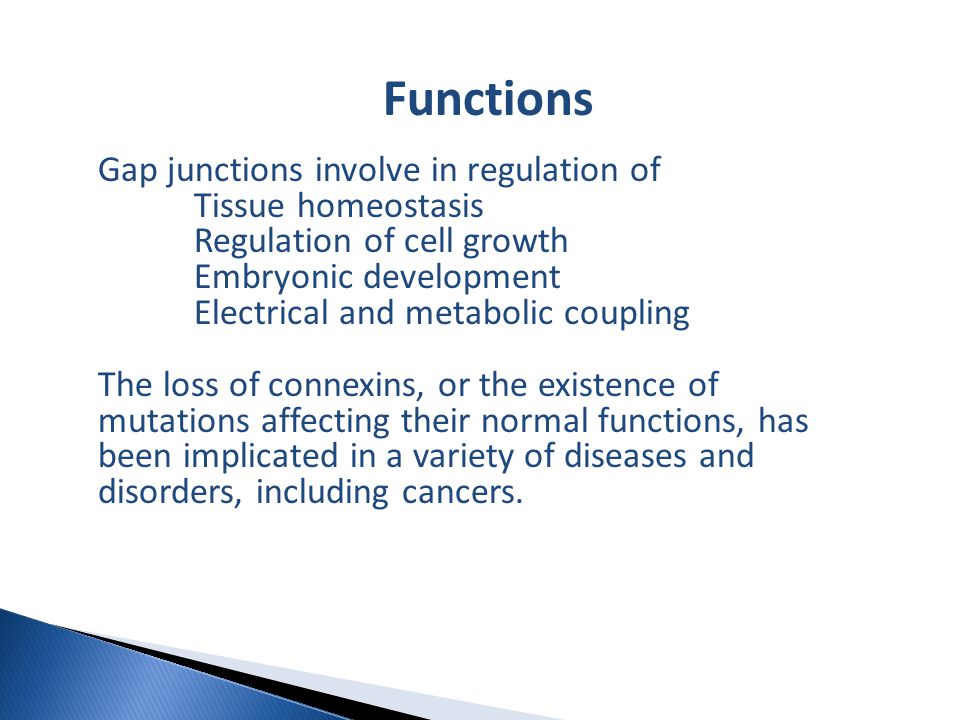Gap Junction
Gap Junction Definition:
What is Gap junction: It is a type of cell junction. In it, the adjacent cells are connected with the help of protein channels. These channels help to connect the cytoplasm of each cell and permit molecules, ions, and electric signals to pass through between them. It lies between the majority of cells in the body because of their presence between cells which are directly touching other cells. Its only present in animal cells, while the plant cells connected through the channels, known as Plasmodesmata.

The function of Gap Junctions:
The main function which is performed by it is to connect cells together. This cell’s connection allows the molecules to pass from one cell to the other cells. Due to this, the cells communicate with each other and allow to molecules enter directly in neighboring cells without to go through the extracellular fluid which surrounded by the cells. During the development of the embryo, the gap junction is much important when neighboring cells have to communicate together in order to develop in right place at right time. The embryos cannot develop normally if gap junctions are blocked.
Even, when a cell begins to die from any injury or disorder, neurotransmitters send signals by its gap junction. These signals may cause of neighbor cells to die, even they are not injured. This is known as the ‘Bystander Effect’, by this, the neighbor cells innocent bystanders which become victims.
Gap Junction Structure:
It composed of connexin proteins in vertebrate cells. The group of six connexin proteins makes a connexon, and two connexons form a channel which allows molecules to pass through. Other channels in the gap junction are composed of pannexin proteins. Hundreds of channels lie together at a point of gap junction which is known as ‘gap junction plaque’. A plaque is defined as the mass of proteins.

Other Cell Junctions:
There are other two kinds of cell junctions in the vertebrates are tight junctions and anchoring junctions. The tight junctions are the region where cells bound together closely to make a barrier and they usually present in Epithelial cells that are found on the body surface and the lining organs. The anchoring junctions are the cells by the proteins which are connected to the cytoskeleton of the cell.
On the other hand, plants have no gap junction but they have Plasmodesmata. The plasmodesmata are the channels that create a connection between the cytoplasm of two adjacent plant cells. The plasmodesmata have a different structure than the gap junction because of plant cells has tick cell walls, but their function is the same. The plant cells communicate with each other with the help of their plasmodesmata.
Gap Junction Vs. Tight Junction
| Tight Junction | Gap Junction |
|---|---|
| Contain plasma membranes, which are very tightly pressed against each other due to bound proteins. | Consist of cytoplasmic channels from one to the other cytoplasm, surrounding with membrane proteins |
| Contain proteins called claudins. | Contain proteins called connexins |
| Regulate the movement of water and solutes between the epithelial layer. | Allows the direct chemical communication between adjacent cytoplasm |
| Prevent the leakage of extracellular fluid across the epithelial cell layer. | Allow the movement of ions, sugars, amino acids, and other small molecules between cells |
| A specialized connection of two adjacent animal cell membranes, such that, space usually lying between them is absent. | Linkage of two adjacent cells consisting of a system of channels extending across a gap from one cell to the other, allowing the passage |
| Also known as occluding junctions and zonulae occludentes | Also known as nexus and macula communicans |
| Occur in the epithelia of vertebrates | Occur in all types of tissues, except in fully- developed skeletal muscles and mobile cells types |


